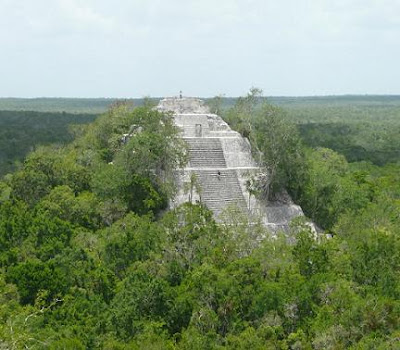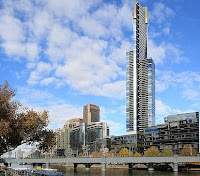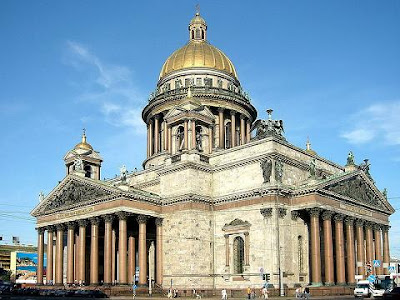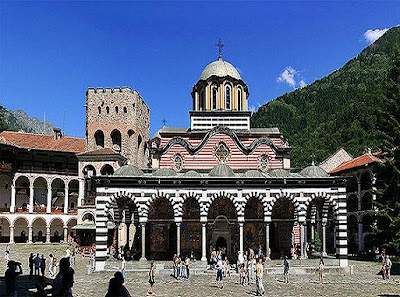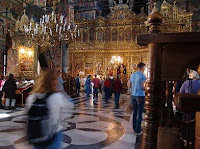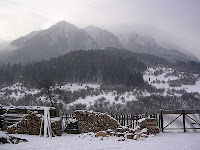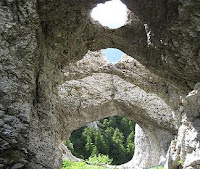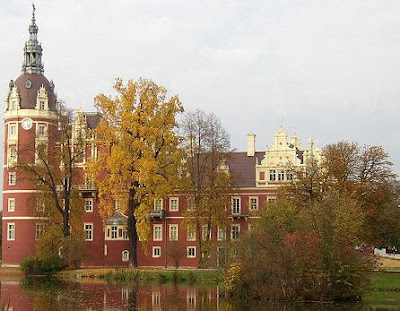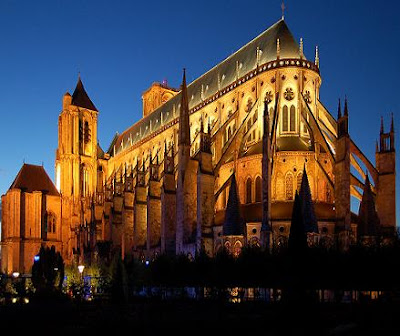The Verrazano Narrows Bridge is a double decked suspension bridge that connects boroughs of Staten Island and Brooklyn in New York City at the Narrows, reach connecting the relatively protected upper bay with larger lower bay. The details of Verrazano Narrows Bridge are explained in world tour guides below. The bridge is named for Italian explorer Giovanni da Verrazano, the first known European navigator to enter New York Harbor and Hudson River, while crossing Narrows. It has a center span of 4,260 feet or 1,298 m and was largest suspension bridge in the world at the time of its completion in 1964, until it was surpassed by the Humber Bridge in United Kingdom in 1981. It now has the eighth longest center span in the world, and is the largest suspension bridge in the United States. Its massive towers can be seen throughout a good part of the New York metropolitan area, including from spots in all five boroughs of New York City.
 The bridge furnishes a critical link in local and regional highway system. Since 1976, it has been starting point of New York City Marathon. The bridge marks gateway to New York Harbor all cruise ships and most container ships arriving at Port of New York and New Jersey must pass underneath the bridge and thus must be built to accommodate clearance under the bridge. This is most notable in case of the ocean liner RMS Queen Mary 2. The bridge is owned by New York City and operated by Triborough Bridge and Tunnel Authority, an affiliate agency of Metropolitan Transportation Authority. Interstate 278 passes over the bridge connecting Staten Island Expressway with the Gowanus Expressway and the Belt Parkway. The Verrazano, along with the other three major Staten Island bridges, created a new way for commuters and travelers to reach Brooklyn, Long Island, and Manhattan by car from New Jersey.
The bridge furnishes a critical link in local and regional highway system. Since 1976, it has been starting point of New York City Marathon. The bridge marks gateway to New York Harbor all cruise ships and most container ships arriving at Port of New York and New Jersey must pass underneath the bridge and thus must be built to accommodate clearance under the bridge. This is most notable in case of the ocean liner RMS Queen Mary 2. The bridge is owned by New York City and operated by Triborough Bridge and Tunnel Authority, an affiliate agency of Metropolitan Transportation Authority. Interstate 278 passes over the bridge connecting Staten Island Expressway with the Gowanus Expressway and the Belt Parkway. The Verrazano, along with the other three major Staten Island bridges, created a new way for commuters and travelers to reach Brooklyn, Long Island, and Manhattan by car from New Jersey.The bridge was the last great public works project in New York City overseen by Robert Moses, the New York State Parks Commissioner and head of the Triborough Bridge and Tunnel Authority, who had long desired the bridge as a means of completing the expressway system which was itself largely the result of his efforts. The bridge was also the last project designed by Chief Engineer Othmar Ammann, who had also designed most of the other major crossings of New York City, including the George Washington Bridge, the Bayonne Bridge, the Bronx Whitestone Bridge, the Robert F. Kennedy Bridge, and the Throgs Neck Bridge. The plans to build the bridge caused considerable controversy in neighborhood of Bay Ridge, because many families had settled in homes in the area where bridge now stands and were forced to move.
Construction on the bridge began August 13, 1959, and the upper deck was opened on November 21, 1964 at a cost of $320 million. New York City Mayor Robert F. Wagner cut the ribbon at the opening ceremony, which was attended by over 5,000 people. The lower deck opened on June 28, 1969. The bridge took over the title of the longest suspension bridge in the world from 1964 until 1981, when it was eclipsed by the Humber Bridge in England. Fort Lafayette was an island coastal fortification in New York Harbor, built next to Fort Hamilton at the southern tip of what is now Bay Ridge. It was destroyed as part of the bridge's construction in 1960; the Brooklyn-side bridge pillars now occupy the fort's former foundation.
According to the US Department of Transportation each of the two towers contains 1,000,000 bolts and 3,000,000 rivets. The diameter of each of the four suspension cables is 36 inches. Each cable is composed of 26,108 wires amounting to a total of 143,000 miles or 230,136 km in length. Because of the height of the towers 693 ft and their distance apart 4,260 ft, the curvature of the Earth's surface had to be taken into account when designing the bridge the towers are 1+5⁄8 inches or 41.275 mm farther apart at their tops than at their bases. Because of thermal expansion/contraction of the steel cables, the bridge roadway is 12 feet or 3.66 m lower in summer than its winter elevation.
The bridge is affected by weather more than any other bridge in the city because of its size and isolated location close to the open ocean. It is occasionally closed either partially or entirely during strong wind and snow storms. The Queen Mary 2 was designed with a flatter funnel to pass under the bridge, and has 13 feet of clearance under the bridge during high tide. The bridge has fostered more traffic on the Outerbridge Crossing and the Goethals Bridge, both of which connect Staten Island with New Jersey. In 2009, all 262 of the mercury vapor fixtures in the bridge's necklace lighting were replaced with energy efficient light emitting diodes.

 In 2008 about 190,000 vehicles used the bridge per day on average. As of 2009 one way toll in cash is $11 per car or $5 per motorcycle. E-Z Pass users with New York State transponders pay $9.14 per car or $3.98 per motorcycle; out-of-state account holders get no discount. From 1964 to 1986, the toll was collected in both directions, until Staten Island residents concerned about pollution from idling vehicles called for one way tolls. However, as of 2009 the eastbound toll booths are still in place, requiring drivers to slow down. While the high cost of the toll between Brooklyn and Staten Island has always been an issue for residents, some favor the toll because they see it as a way to curb population growth on Staten Island. Each of the four bridges to the Island is tolled.
In 2008 about 190,000 vehicles used the bridge per day on average. As of 2009 one way toll in cash is $11 per car or $5 per motorcycle. E-Z Pass users with New York State transponders pay $9.14 per car or $3.98 per motorcycle; out-of-state account holders get no discount. From 1964 to 1986, the toll was collected in both directions, until Staten Island residents concerned about pollution from idling vehicles called for one way tolls. However, as of 2009 the eastbound toll booths are still in place, requiring drivers to slow down. While the high cost of the toll between Brooklyn and Staten Island has always been an issue for residents, some favor the toll because they see it as a way to curb population growth on Staten Island. Each of the four bridges to the Island is tolled.Beginning in 2009, eight of the unused Brooklyn-bound toll booths will be removed in a project to improve traffic flow at the toll plaza, three of the unused toll booths will be subsequently removed in 2009 during construction of second phase. Recently residents living on both ends of the bridge have lobbied for pedestrian access. In October 2003 Mayor Michael Bloomberg promised to look into establishing the long-awaited pedestrian and bicycle access.















